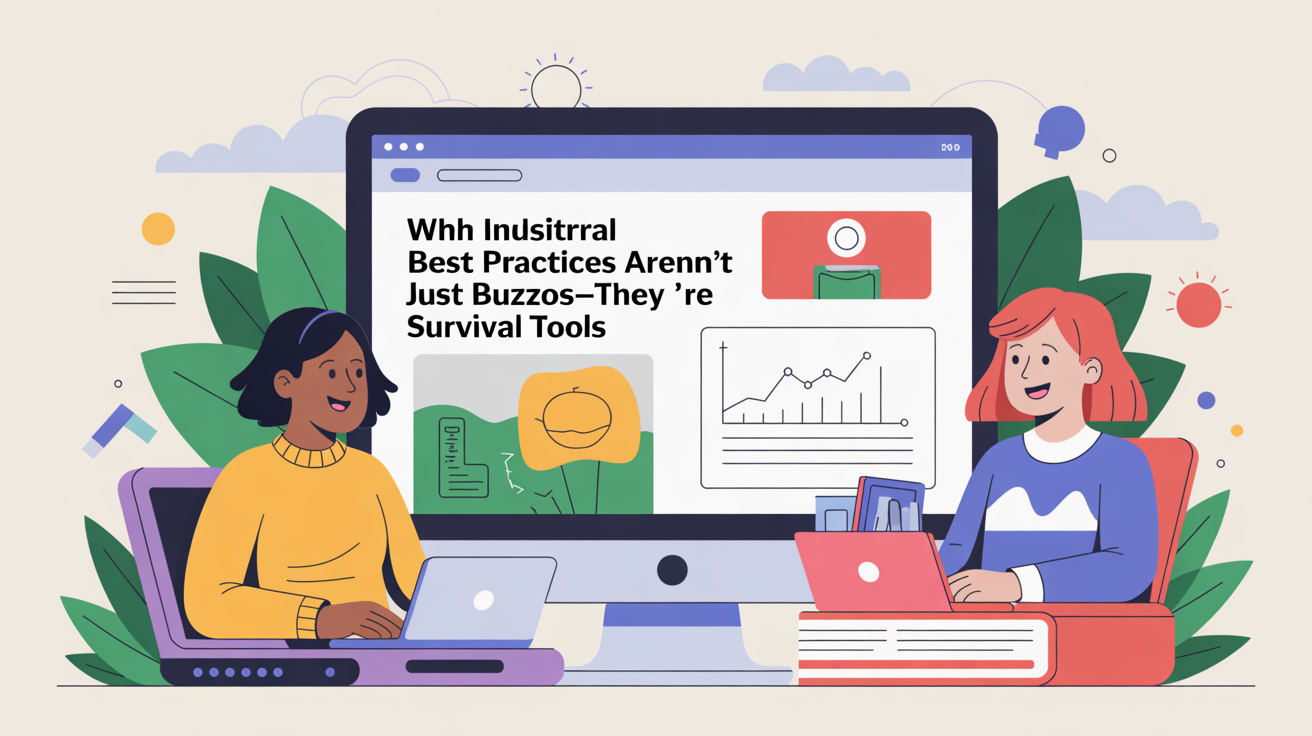Why Industry Best Practices Aren’t Just Buzzwords—They’re Survival Tools
Picture this: You’re in a race where the finish line keeps moving. Your competitors are adapting faster, customers expect more, and the tools you used last year already feel outdated. Sound familiar? This isn’t just business as usual—it’s the reality for 83% of professionals who say their industries have transformed more in the past three years than in the previous decade (McKinsey, 2023). In this environment, clinging to “how we’ve always done it” isn’t just risky—it’s a one-way ticket to irrelevance. Let’s explore the strategies separating thriving organizations from those scrambling to catch up.
1. Agile Decision-Making: From Chess Masters to Jazz Improvisers
Gone are the days of quarterly planning cycles. In a world where 40% of consumer behaviors shift unpredictably every 90 days (Harvard Business Review), businesses need to master real-time adaptation. Take it from the playbook of a Fortune 500 retail client we recently advised: By implementing dynamic scenario planning, they reduced inventory waste by 28% while improving customer satisfaction scores. Here’s what works:
The New Decision-Making Hierarchy
| Traditional Approach | Agile Alternative |
|---|---|
| Annual budget allocations | Rolling 90-day resource planning |
| Top-down mandates | Cross-functional decision pods |
| Risk avoidance culture | Measured experimentation budgets |
The kicker? Companies using agile decision-making models report 89% faster response to market changes (Forrester). But this requires more than just new software—it demands a cultural shift toward trusting data over hierarchy.
2. Data Fluency: Your Organization’s Second Language
We’ve all seen the stats: 2.5 quintillion bytes of data created daily. But here’s what most miss—data isn’t the new oil, it’s the new oxygen. You don’t just stockpile it; you need to breathe it. A recent PwC study revealed that data-mature companies are 23x more likely to acquire customers profitably. Yet only 27% of employees describe themselves as “comfortable working with data.”
Building Data Confidence: Where to Start
| Common Pitfall | Best Practice |
|---|---|
| Overwhelming dashboards | Contextual data alerts |
| Isolated analytics teams | Embedded data translators |
| Vanity metrics obsession | Outcome-focused KPIs |
Take inspiration from a mid-sized manufacturer that transformed its shop floor efficiency. By training frontline workers to interpret real-time production data (not just collect it), they achieved a 19% productivity bump in six months. The lesson? Data isn’t just for analysts—it’s everyone’s responsibility.
3. The Human Edge in an Automated World
As AI adoption accelerates (75% of enterprises now piloting generative AI tools per Gartner), a counterintuitive truth emerges: Your people matter more than ever. The most successful companies aren’t those replacing humans with bots—they’re redesigning workflows to amplify human strengths. Consider these numbers:
- Teams using AI as a collaborative tool see 42% higher innovation output (MIT Sloan)
- Companies investing in emotional intelligence training report 31% lower turnover (LinkedIn)
- Organizations with strong learning cultures are 52% more productive (Deloitte)
A financial services client recently nailed this balance. Their “AI apprenticeships” program pairs junior analysts with machine learning tools, creating hybrid roles that reduced reporting time by 65% while improving insights quality. The key? Viewing technology as a teammate rather than a threat.
Your Move: From Insight to Action
Here’s the uncomfortable truth: Best practices aren’t static. What worked yesterday might be your Achilles’ heel tomorrow. But that’s also the excitement—there’s always room to innovate, adapt, and outmaneuver. As you leave this page, ask yourself:
- Which single process could benefit from radical agility?
- Where is data being collected but not activated in your organization?
- How might you redesign roles to marry human creativity with AI efficiency?
I’d love to hear which of these resonates most with your experience—or what crucial practice we missed. Drop a comment below or tag me in your LinkedIn post. After all, the best insights don’t come from solo experts, but from professionals like you sharing what actually works in the trenches.
Data sources: McKinsey Global Survey 2023, Forrester’s Agile Business Report 2024, Gartner AI Adoption Index 2023


Leave a Reply